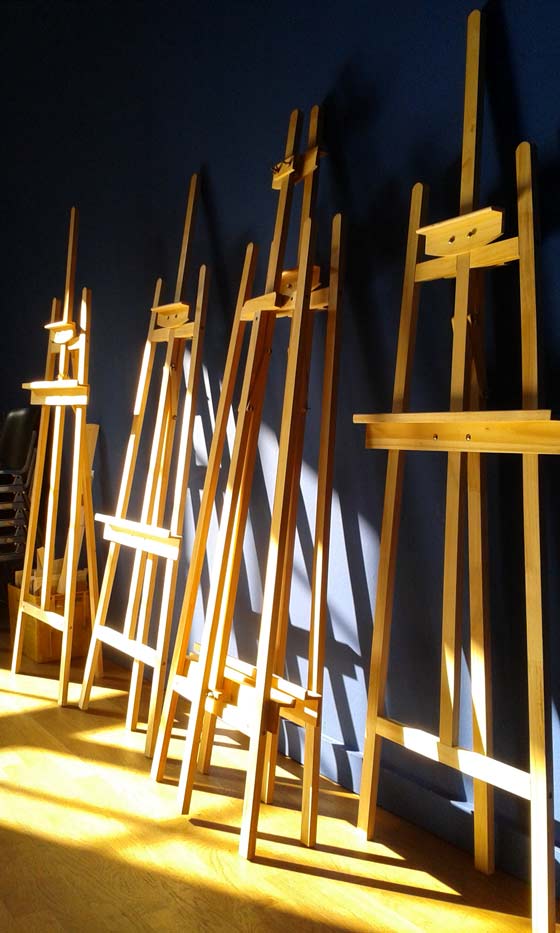
The Blue Room – things remain exciting! Photo: Barbara Rösch
A boat made of wood and painted canvas strips, a yodeling flamingo, a photograph of turquoise tiles from a Berlin subway station, two cake replicas, metamorphosed Ugaritic letters, a fisherman, a play. What do they all have to do with each other? They are all going to be exhibited at the Jewish Museum Berlin this summer.
And what do a car-body painter, well known in his native Iraq, an architect from Syria, a young Egyptian chef, a painter from the former Soviet Union, a Greek doctoral student, and a social worker from right here in Berlin have in common? They will all be exhibiting at the Jewish Museum Berlin this summer.
On July 12 a group exhibition entitled The Blue Room opens. It will be the high point of a meeting project that I have been supervising since January. → continue reading
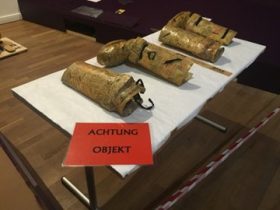
Golem Costume for Death, Destruction, and Detroit II at the Schaubühne Berlin, 1987. Directed by Robert Wilson; Lender: The Jewish Museum, New York
The Golem is brought to life from inanimate material, as is the exhibition we are dedicating to him. Up until the opening on September 22, many days will be spent building, painting, felting, typesetting, printing, writing, cutting, hanging and pouring. For the celebratory opening, we have invited as our special guest, a robot who will greet the public.
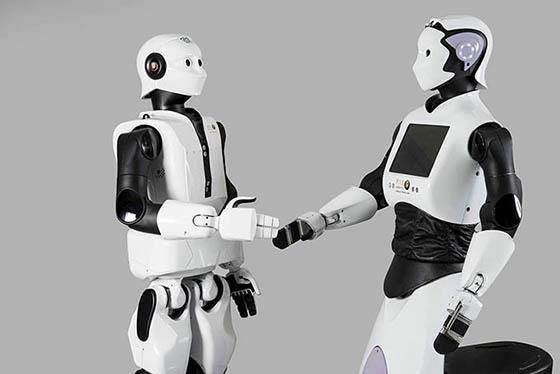
REEM and REEM C at a Meet-and-Greet © PAL Robotics, Barcelona
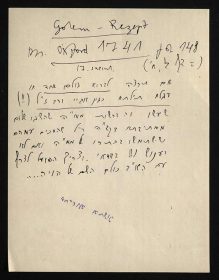
© Scholem Archives, The Jewish National and University Library, Jerusalem, Israel
But up until that moment, there is still a lot to be done. All of the objects and works of art have already arrived in Berlin. For example, the smallest item (14.5 x 11 cm), which is roughly the size of a post-it. On this piece of paper, Gershom Scholem (1897–1982), the scholar of Jewish mysticism, noted the beginning of the so-called “Golem Recipe,” which he had discovered in a medieval manuscript during his research at Oxford. → continue reading
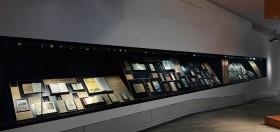
View of the cabinet exhibition “In a foreign country. Publications from the Displaced Persons Camps” in the basement of the Libeskind Building.
© Jewish Museum Berlin, photo: Jens Ziehe
In our cabinet exhibition “In a foreign country” we explore the publishing operations of survivors and refugees, the so-called displaced persons (DPs) who were stranded in occupied Germany after 1945. For this show we selected the widest variety of genres: schoolbooks, Judaica, volumes of poetry and prose, historical documentation, and Zionist pamphlets.
They all have two things in common: first, the quality of the paper these post-war printers used was extremely bad. Second, they all come from the Berlin State Library, whom we’re hosting for this exhibition due to its historically valuable collection of DP literature.
With one little exception. → continue reading




